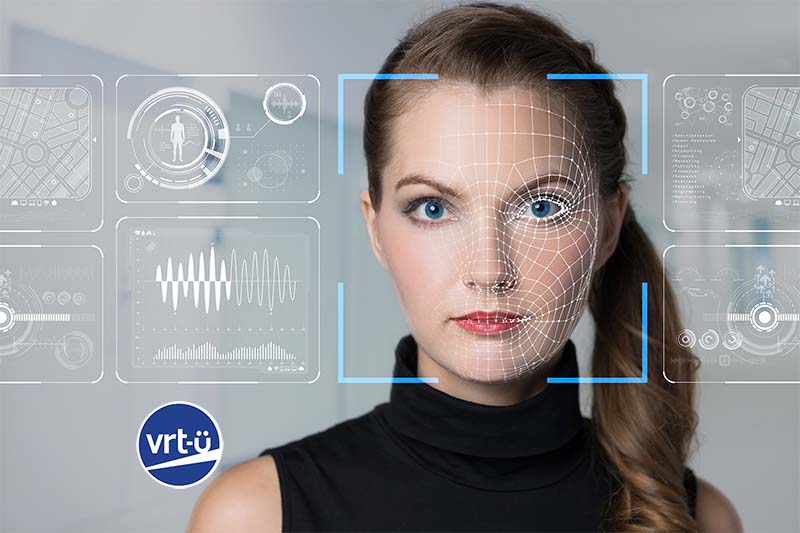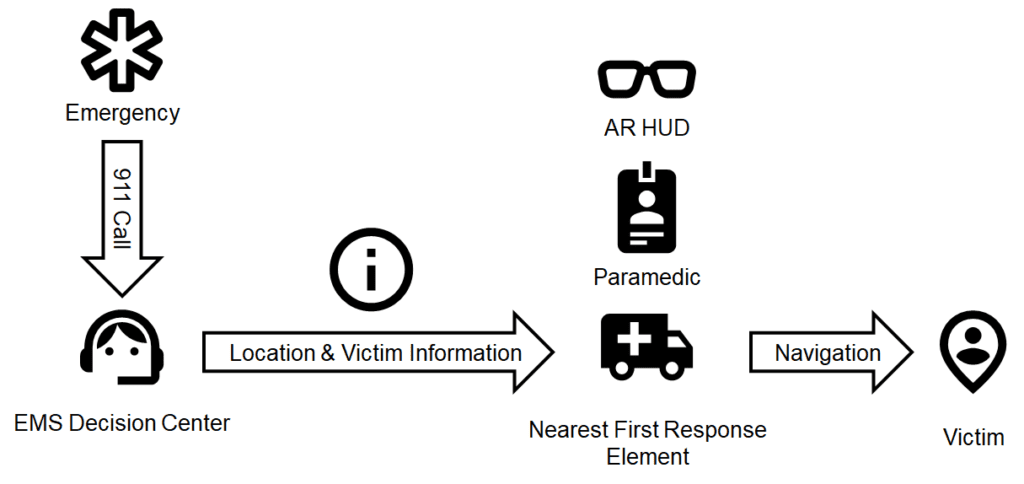A Case for Secure Augmented Reality (AR): Telehealth

Augmented reality (AR) technology overlays virtual information to the user’s real environment, providing an intuitive interaction experience to the users. AR has been recognized as a viable technology to communicate situational information in healthcare settings. In an Emergency Medical Service (EMS) scenario, a headworn AR device enabling a hands-free user interface can guide paramedics and first responders to locate an injured person, successfully navigate to the individual, and assess health status (see Figure 1). Such an AR-integrated EMS system could retrieve relevant medical history information from the victim’s Electronic Medical Record (EMR) for frontline medical personnel to provide best field treatment.
AR in Telehealth
Telehealth includes telemedicine and other remote healthcare services. At present, many telemedicine platforms use video calls or WebRTC (Web Real-Time Communication) based technology to transmit video or audio. However, the telemedicine system using AR technology would be more intuitive, easier to use, and would allow users to focus on solving medical problems rather than looking away to view a mentor’s guidance through a monitor display.
In AR-enabled medical training, the original 2D teaching materials can be presented through 3D immersive content, such as surgical simulation. During preoperative communication, AR technology allows the patient to intuitively understand the condition of the disease and facilitates effective communication between the doctor and the patient. In recent history, doctors often use videos and images to discuss surgical plans, intraoperative guidance, and remote consulting services. AR technology can now convert 2D materials into 3D images, which can improve efficiency and accuracy.

Cyberthreats and Healthcare
Telehealth and EMS are already encountering challenges in the field of security and privacy. As medical records are protected by laws, any medical information about patients needs to be processed properly and stored securely.
Most of the AR implementations are focused on new use cases and proof-of-concept applications for public safety and telehealth. AR systems collect data from real-world environments, which often have sensitive data mixed with user input, posing a risk to privacy. Healthcare systems are already under extreme pressure to prevent and contain cyber-attacks. Providing a secure method of transferring sensitive medical information and patient data should help in the adoption of AR devices by EMS agencies and telehealth service providers.
How can VRT-U help?
VRT-U founder, Hurriyet Aydin Ok is a Sr. Research Fellow at Cyber Security and Privacy Research Institute (CSPRI) at GWU. He co-authored a literature survey on the security issues faced by AR enabled applications, especially in Telehealth and Emergency Medical Services (EMS).
Readers who are interested in this topic may contact us here.
